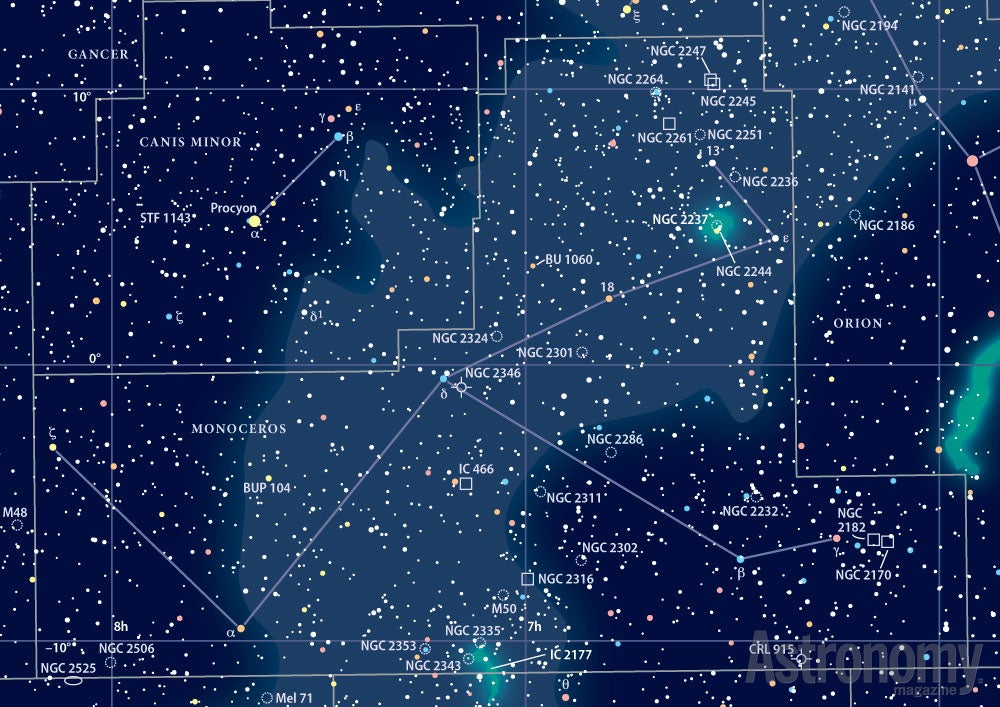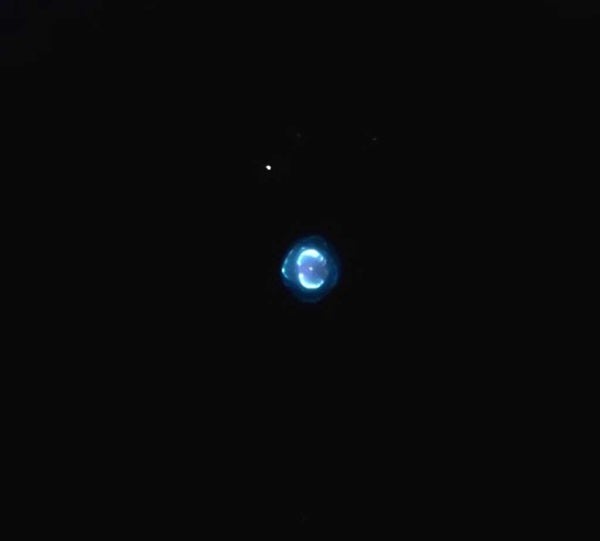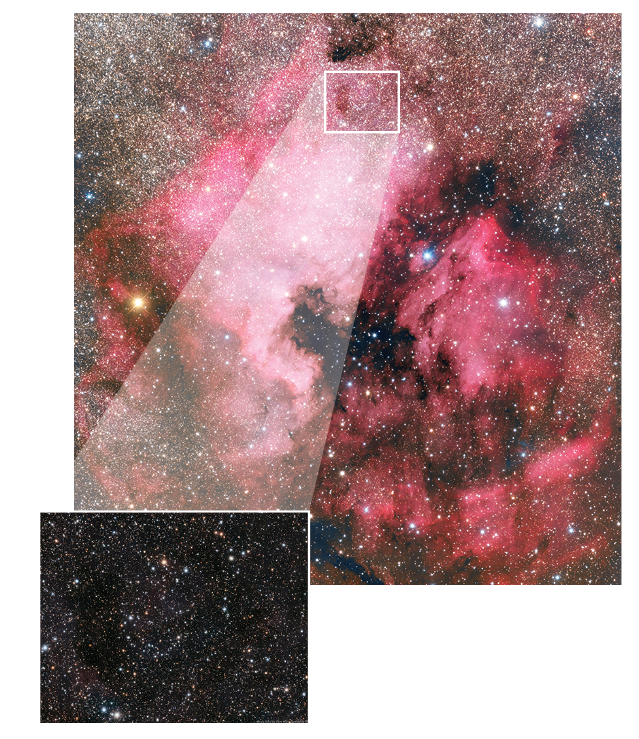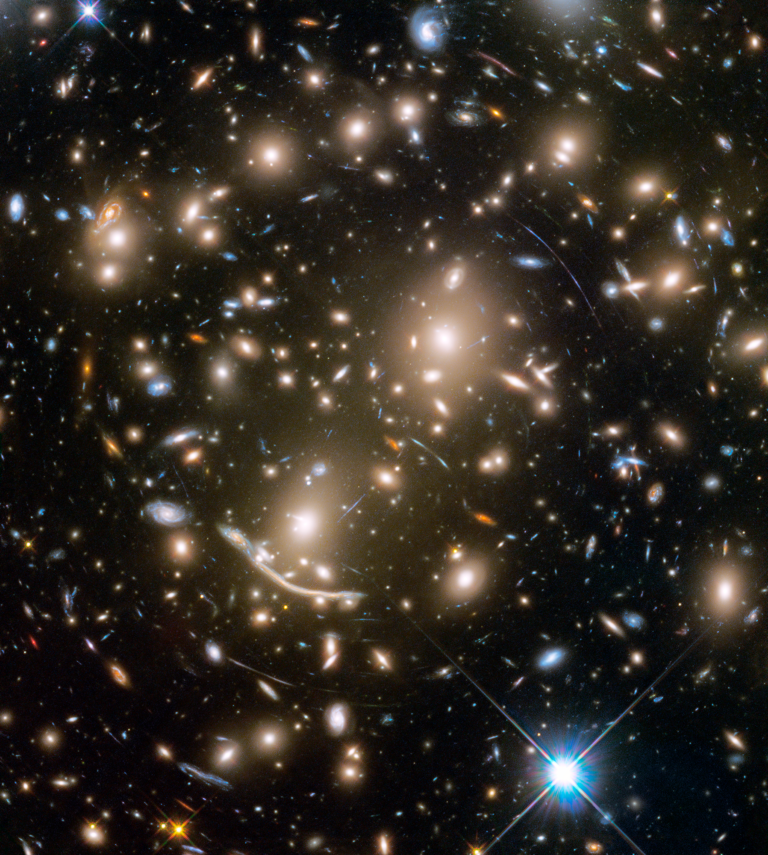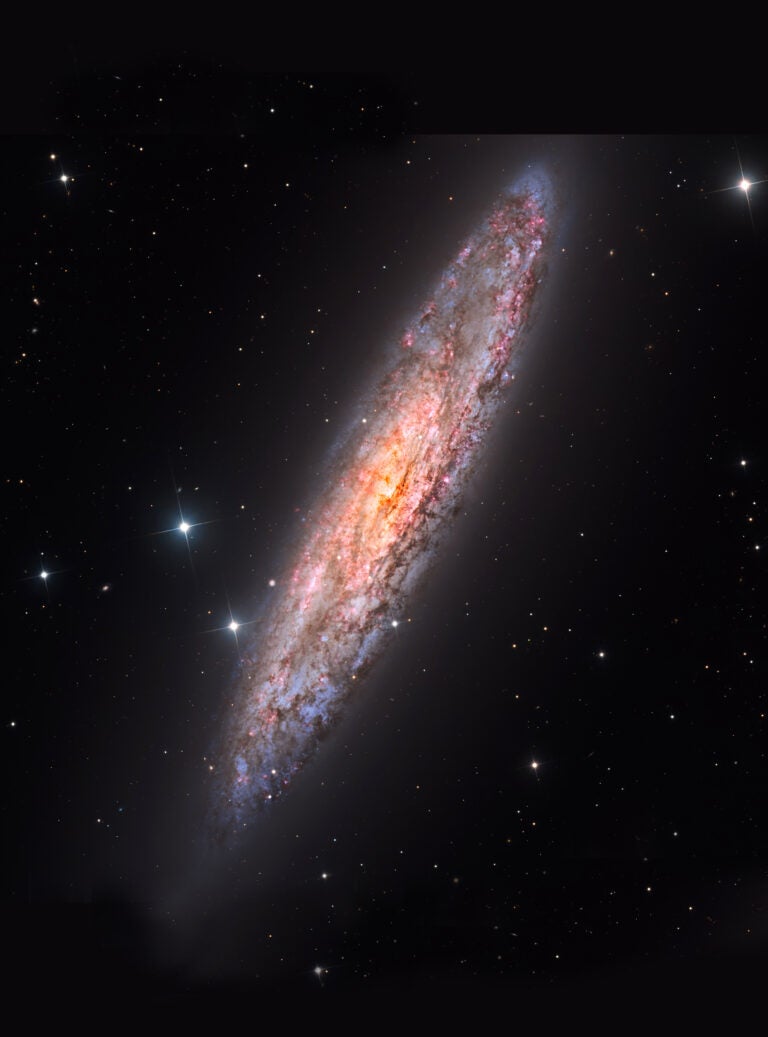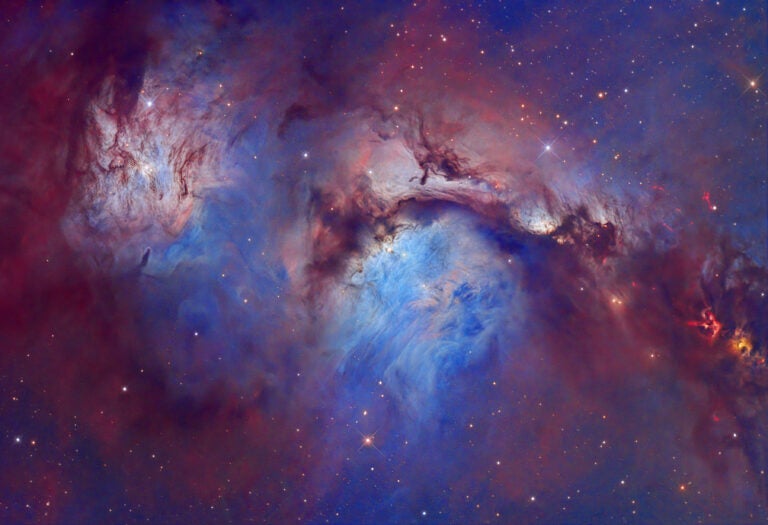Targets for February 20–27, 2014
Binoculars: Open cluster M48
Small telescope: Hagrid’s Dragon (NGC 2301)
Large telescope: Elliptical galaxy NGC 2832
This week’s naked-eye and binocular object is one of the neglected Messier objects, M48 in Hydra. Amateur astronomers observe this open cluster mostly during Messier marathons in March or April. They note it, check it off their list, and move on. In my opinion, it deserves better treatment than that.
Because it shines at magnitude 5.8, M48 is pretty easy to see without optical aid if you’re a sharp-eyed observer at a dark site. Large binoculars resolve a couple dozen of its brightest stars scattered over a 1° circle of sky.
I know it’s my naked-eye object this week, but allow me to digress. If you point a 4-inch telescope at M48, you’ll see a whole new level of detail. About 75 stars sprinkle across the field of view. This cluster lies on the outskirts of the Milky Way’s path through our sky, so the view also includes many, more distant, unresolved stars.
Increasing the magnification will increase the star count, although the appearance of this object as a cluster becomes lost. Look for a zigzag chain of 9th- and 10th-magnitude stars running from the south-southwest to the north-northeast through the cluster’s center.
You’ll find the 48th entry in Charles Messier’s catalog 3° south-southeast of magnitude 4.4 Zeta (ζ) Monocerotis only 0.6 from Hydra’s border with that constellation.
A fire-breathing cluster
This week’s small telescope target is Hagrid’s Dragon, which lies in the constellation Monoceros the Unicorn. Somehow it seems fitting to me that a dragon would pair up with a unicorn. Astronomers know this object by another designation: open cluster NGC 2301.
Sharp-eyed observers also can spot this target without optical aid from a dark site. Just look 5.1° west of magnitude 4.2 Delta (δ) Monocerotis. NGC 2301 shines at magnitude 6.0 and measures 15′ across.
This open cluster is a great object through any size telescope, and wide-angle views will show a rich surrounding star field. A 6-inch scope reveals some 50 stars. Crank the magnification past 200x, and look for a double star dead-center in the cluster. The two components have magnitudes of 8.0 and 8.8.
The common name, Hagrid’s Dragon, is a recent one. Astronomy magazine Contributing Editor Stephen James O’Meara sees a dragon in flight when he looks at this cluster. He named it Hagrid’s Dragon after a creature in the Harry Potter series of novels by J. K. Rowling. Why didn’t Steve call NGC 2301 Norbert, the name Rowling gave to the fictional dragon? Probably — and I certainly mean no disrespect to anyone named Norbert — because “Hagrid’s Dragon” sounds more impressive.
Location, location, location
This week’s large telescope target is elliptical galaxy NGC 2832 in Lynx. Some observers find elliptical galaxies beneath their attention because they lack detail. Sometimes, however, looking at one might offer a surprise. Such is the case with NGC 2832. It resides in galaxy cluster Abell 779, which lies less than 0.7° south-southwest of magnitude 3.1 Alpha (α) Lyncis.
Although our target glows weakly at magnitude 11.9, NGC 2832 is the brightest member of the cluster. It has an oval shape and measures 50 percent longer than it is wide. You’ll note it oriented roughly northwest to southeast.
If you have access to an 11-inch or larger telescope, head to a dark site, and study the area around NGC 2832. See how many other faint galaxies you can spot.
The magnitude 13.4 elliptical galaxy NGC 2831 lies only 24″ to the southwest. Even fainter, the magnitude 13.9 lens-shaped spiral NGC 2830 lies a bit more than 1′ to the west-southwest.
Want more? Just 5′ west of NGC 2832 lies magnitude 14.4 NGC 2825, and magnitude 14.5 NGC 2834 lies 4′ southeast of our starting point, NGC 2832.
Expand your observing at Astronomy.com
StarDome
Check out Astronomy.com’s interactive StarDome to see an accurate map of your sky. This tool will help you locate this week’s targets.
The Sky this Week
Get a daily digest of celestial events coming soon to a sky near you.
Observing Talk
After you listen to the podcast and try to find the objects, be sure to share your observing experience with us by leaving a comment at the blog or in the Reader Forums.

